Statistically, the majority of RV owners are also homeowners. The following are six portable tools that you can use either at home or in your RV.
1. Multi-tip screwdriver with square head tips
Your RV is basically a house on wheels bouncing down the highway loosening screws as you go. A multi-tip screwdriver is essential to keeping screws tight and driving others that have worked their way out during transit snuggly back in place.
Make sure you have one like this that includes square head tips as you will find square-headed screws in most all RVs.

Multi-tool screwdriver. Photos via Amazon
2. Cordless drill car adapter
Most RVers already have a cordless drill they use around the house and take with them in the RV. They come in handy running stabilizing jacks up and down (most manufacturers do not recommend this, but the majority of RVers still do so), small field repairs, and can also be used to get your lug nuts/bolts threaded on and off quickly when you have a flat tire, saving your wrists the tedious job of threading them in or out. Always use a torque wrench to tighten lug nuts/bolts to manufactured specifications.
What really makes a cordless drill super convenient for RVers (especially dry campers) is a car adapter allowing them to recharge the battery for their cordless drill without starting their generator or the need for shore power. Here is the link for a car charger from DEWALT.
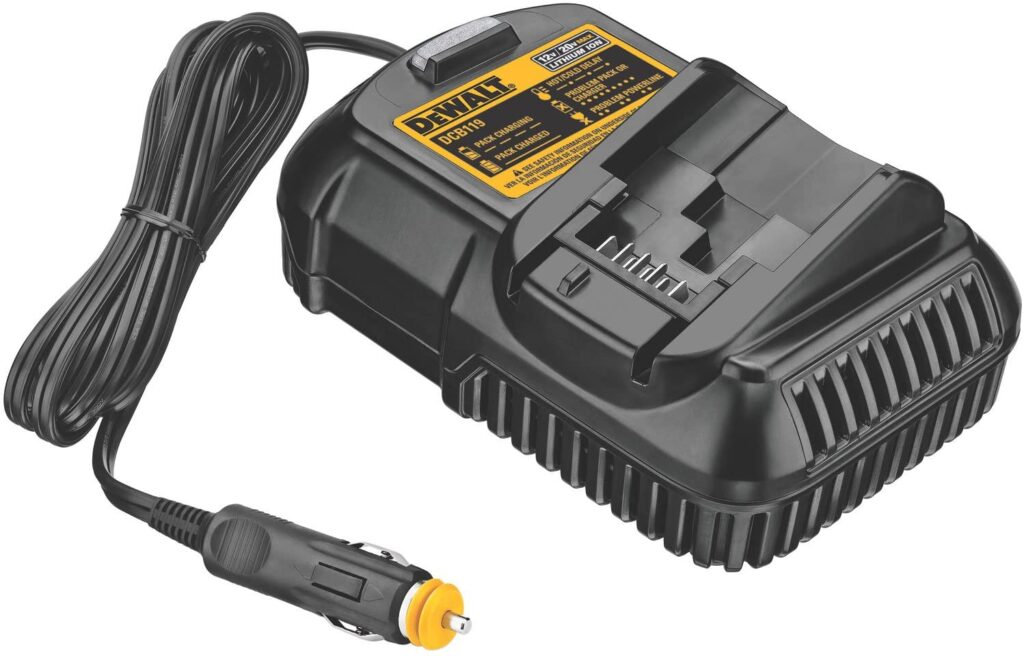
DEWALT 12V car battery charger. Photo via Amazon
3. Flashlight
Every home and RV needs a good flashlight or two in case of emergency and other purposes. For your RV, a tactical flashlight has the added advantage of being able to zoom the light into a tight beam to illuminate the back corner of an outside storage compartment when you are looking for something or light up the numbers on a campsite post when you arrive after hours.
The beam can also be broadened for walking the dog in the evening. Consider buying a two-pack, one for home and one for the RV, eliminating the need to remember to load it each time you head out camping.
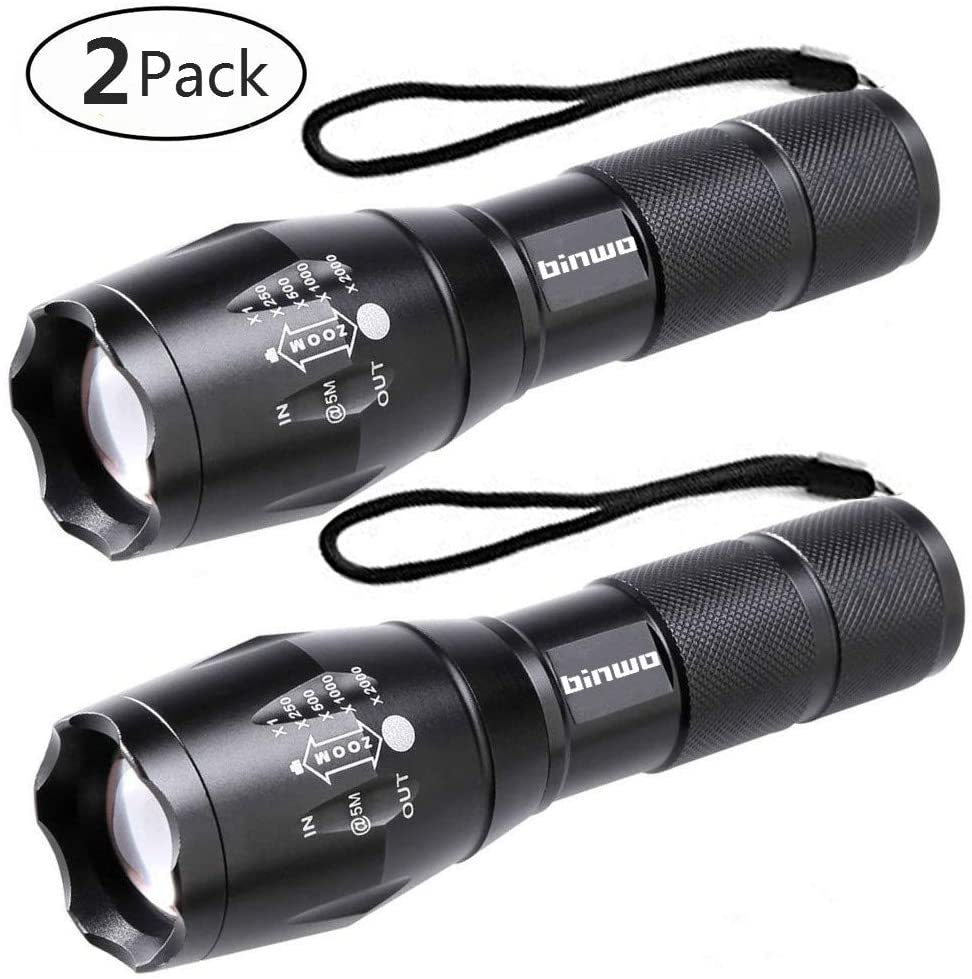
Get a two-pack so you can keep one at home and one in the RV. Photo via Amazon
4. Water pump pliers
These pliers are more commonly known by the brand name Channellock and have many uses around the house and RV. They are super useful when tightening either end of the potable water hose in the campground when hand strength proves insufficient. A pair somewhere in the range of 10-12” like these are about right.
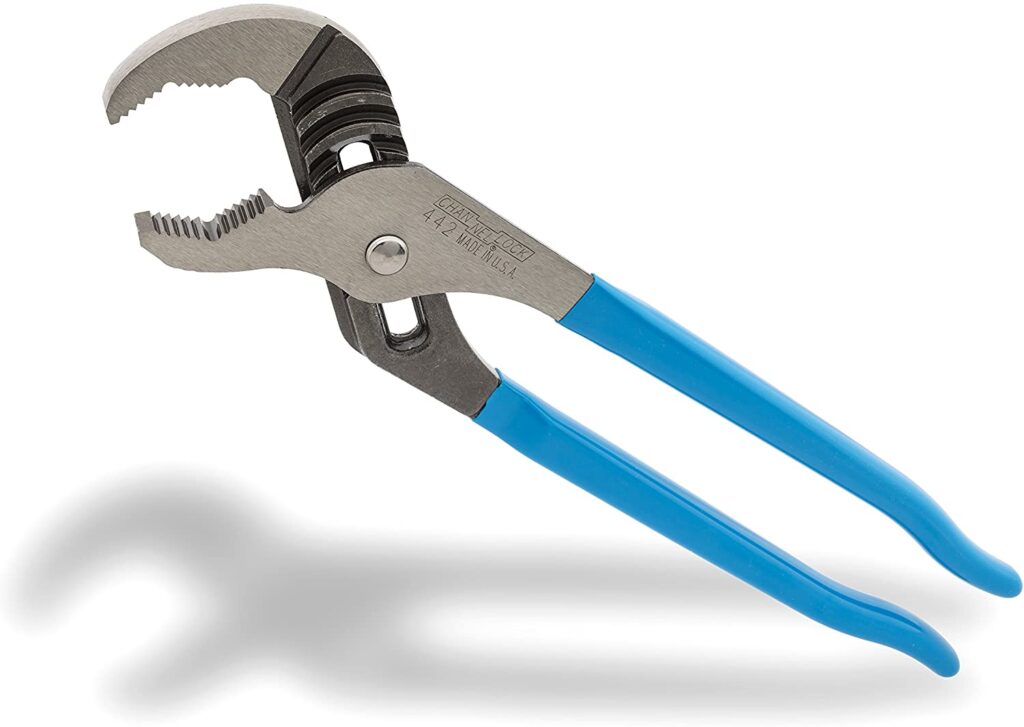
Water pump pliers are one of many useful portable tools. Photo via Amazon
5. Multimeter
While something you won’t likely need very often at home or RVing, a multimeter can come in very handy in any of the following ways:
- Checking the 12-volt fuses in your RV’s distribution panel when a circuit goes dead
- Checking the condition of household batteries used in portable radios, flashlights, and small electronics like handheld GPS units, etc.
- Checking the line voltage of incoming shore power (RV air conditioners can be damaged while operated on low shore power voltage)
- Checking the continuity of circuits or incandescent light bulbs
- Determining 12-volt amp draws when you seem to be depleting your RV’s house batteries sooner than you should be
- Conforming polarity (12 volt DC or 120 volt AC)
For the applications listed above, you don’t need to spend a lot of money on a fancy state-of-the-art unit, just a basic one like this.
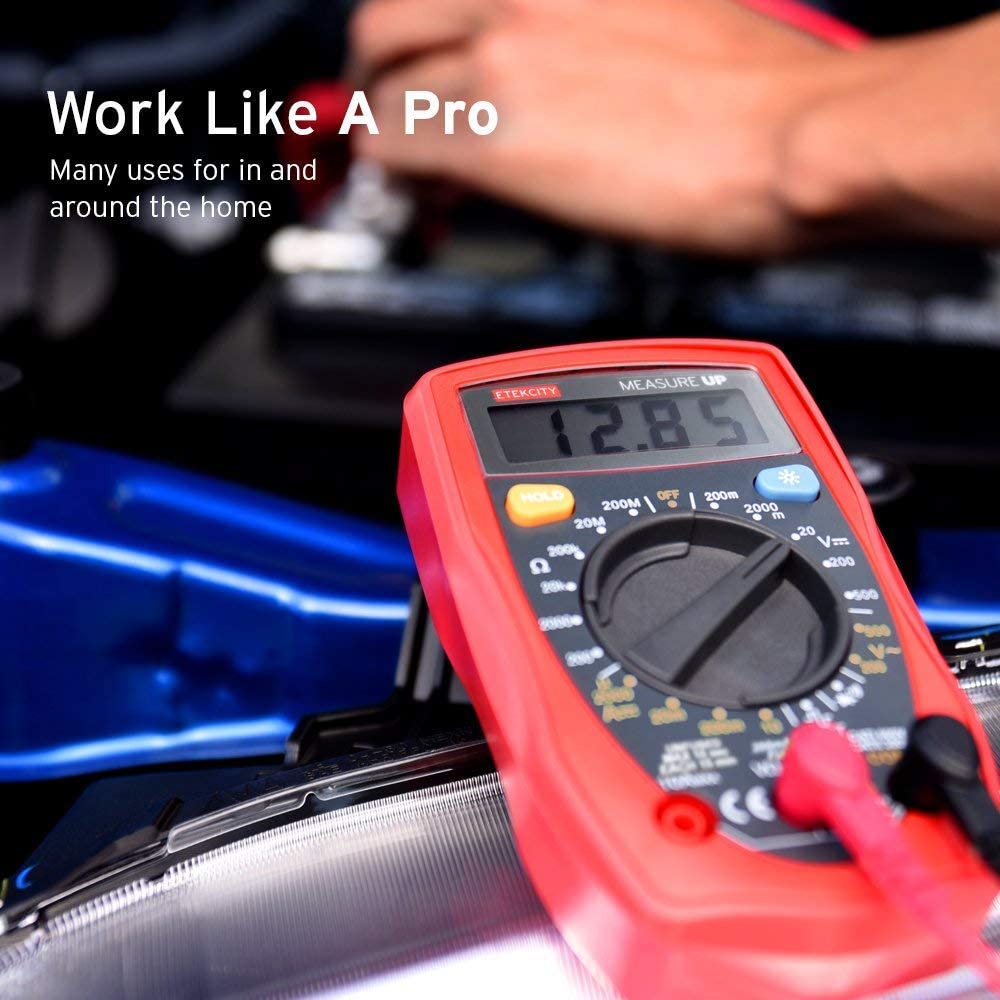
Digital multimeter. Photo via Amazon
6. Wire stripper, cutter, crimper kit
Every homeowner and RV owner needs to have a way to make simple repairs to electrical connections on their personal vehicles and RV. While 120 volt AC repairs are best left to an electrician or RV technician, most RVers have the smarts to safely diagnose and repair a low voltage 12-volt problem in their RV.
However, it doesn’t do much good to have the diagnosis and repair skills if you don’t have the basics to perform a repair. A combination wire stripper/cutter/crimper with an assortment of 12-volt terminals like this gives you what you are likely to need for most low voltage field repairs.
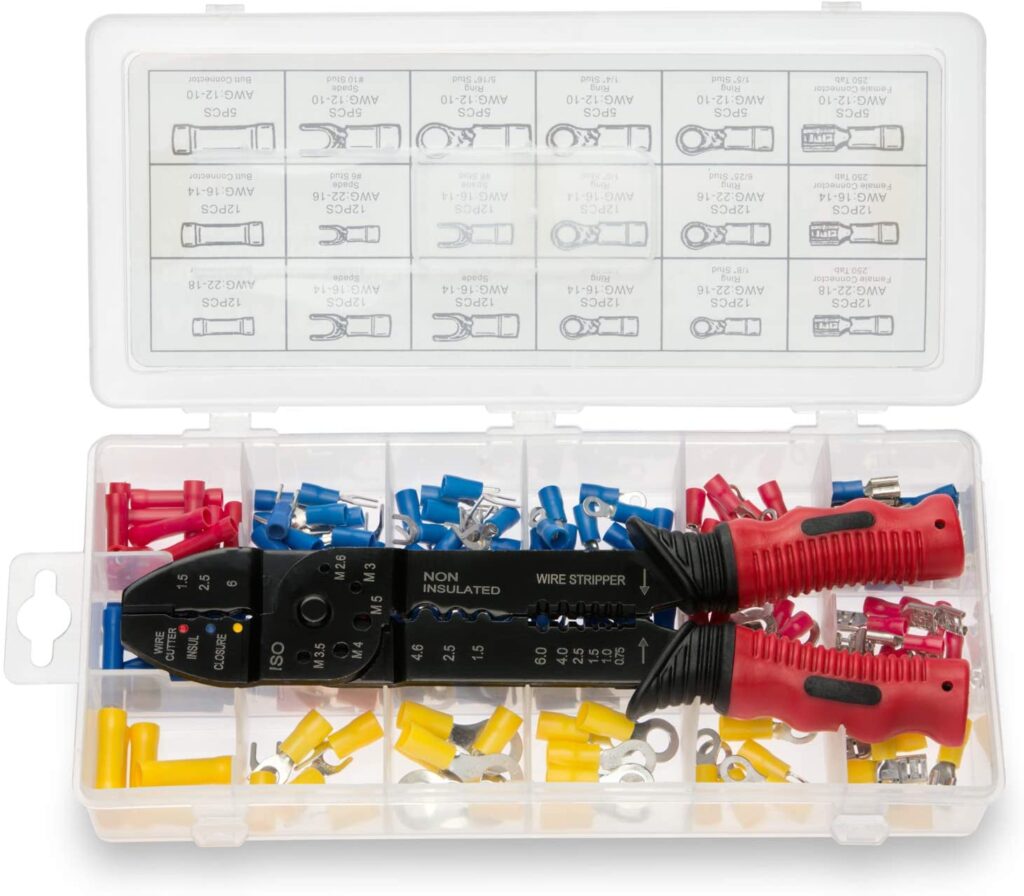
Wire stripper, cutter, and crimper kit. Photo via Amazon
Remember, most any RV can continue to operate without a functioning 120-volt system, but when 12-volt items (water pump, furnace, etc) fail due to wiring problems you are likely done camping until repairs are made.
These portable tools are not only convenient at home but can be very useful on the road in your RV as well. Equipping your RV with basic tools, just another adventure in RVing!

Thank You for posting this!
Very useful article for many folks that haven’t spent their careers with tools in their hands. I (for better or worse) have spent over 40 of my 58 years in the trades. I’m an RV full-timer these days.
I often find myself gladly loaning tools or materials and parts to neighbors and fellow travelers, and sometimes receiving the same. (I’m smart enough to know how ignorant I am!).
Like SO many other things in life, we are all in this together.
Safe travels
I like your parting comment:
I’m smart enough to know how ignorant I am!).
A caveat about #5, if the voltage you need to measure is above 50V, make sure you know about electrical safety, as Thomas Edison said “AC power will never catch on because it’s too dangerous “. Very true, there are old electricians and careless electricians but there are NO old, careless electricians. Shock and electrocution can occur at these voltage levels and 240V/50 A RVs could flash arc if stuff happens though a plasma arc is unlikely, melting copper isn’t pretty up close but is very memorable if you survive.
Pretty good suggestions here. I’d add a couple of points:
Buy a couple pair of Channelocks- a sort one (about 6-8″) and then another about 10′.
Buy a good stripper/cutter. Very frustrating to work with poorly designed and low quality types. The same goes for the connectors as well. Buy them from your hardware store or electrical supply place. Make sure they don’t come from anywhere but the U.S.A.
I think one more must have would be the tools, fittings and tubing to repair your RV plumbing.
Thanks for the helpful post. A side note on the fifth bullet point; When checking for 12-volt amp draw the meter probes must be inserted in series in the circuit to measure amperage.
A note of correction on the sixth bullet point; You confirm polarity not conform polarity (Typo?) . And you only check polarity in a 12 Volt DC circuit (Direct Current), not a 120 Volt AC circuit (Alternating Current). .
You need two sets, one for home & one for the RV, or you will forget them.
Since your screwdriver recommendation seems to be out of stock, let me recommend my favorite, the Autoloader screwdriver available from Lee Valley tools. All the bits are stored inside, and you load it just like pumping a shotgun. I replaced one of the bits I didn’t plan to use much with the square bit my RV uses, Which is as easy as picking a bit off the front magnet and replacing it with the one you want. You never misplace the small parts, and you never have to fumble them on your fingers are cold.
I have everything on your list and have used all of them often.
When it comes to flashlights, you really should consider a head lamp for work where you can’t hold a flashlight in one hand and still have two hands free. As for regular flashlights, think about one that can be positioned to light what you are working on by either a magnet or a stand of some kind.